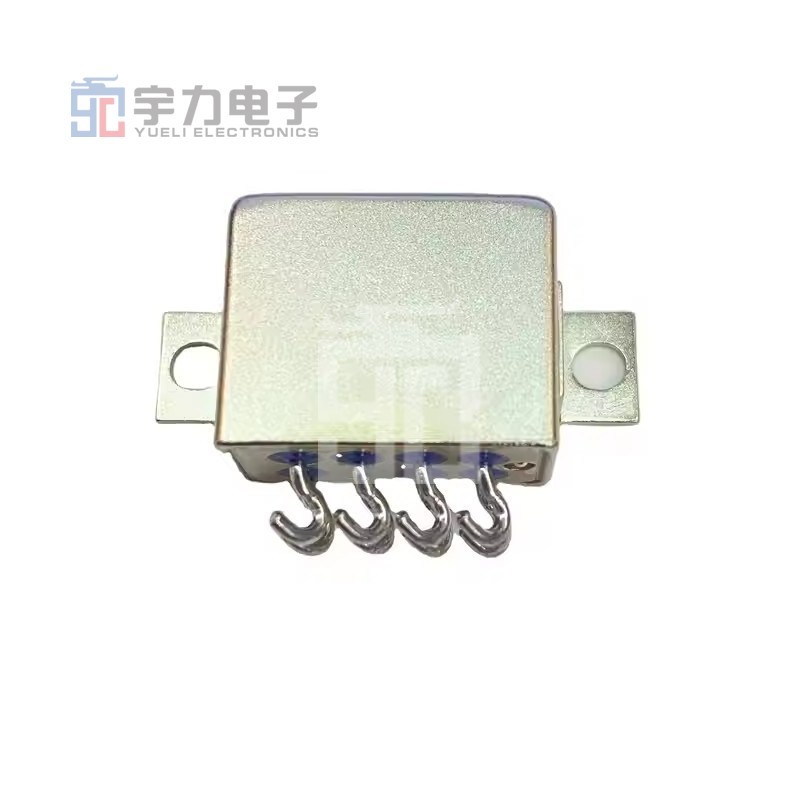Understanding High Power Relays: A Key Component in Modern Electronics
2025-06-27

High power relays are electromagnetic devices designed to control large amounts of electrical power, typically exceeding 10A, and are essential in applications where controlling high voltage systems is necessary. These relays act as switches, allowing a low-power signal to control a high-power circuit, making them indispensable across numerous sectors including industrial automation, automotive, telecommunications, and power management.
One of the primary characteristics of high power relays is their ability to handle significant current loads without compromising performance or safety. This capability is a result of robust construction, which often includes high-quality contacts and a durable housing designed to withstand harsh environmental conditions. Additionally, high power relays provide electrical isolation between the control circuit and the load, enhancing safety and reducing the risk of damage to sensitive components.
High power relays come in various types, each suited for specific applications. For instance, electromechanical relays (EMRs) are commonly used due to their simplicity and effectiveness in switching operations. Solid-state relays (SSRs), on the other hand, offer faster switching times and longer operational lifespans, making them ideal for applications requiring frequent on/off cycles. Understanding the right type of relay for a specific task is crucial for ensuring optimal performance and reliability.
In terms of applications, high power relays are widely utilized in motor control systems, heating equipment, and lighting control systems. In industrial settings, they are often employed to control large machines and equipment, ensuring that operations run smoothly and efficiently. In the automotive sector, high power relays are essential for managing power distribution within vehicles, handling functions such as starter motors, headlights, and other high-current devices.
When selecting a high power relay, several technical specifications should be considered, including contact rating, coil voltage, switching speed, and operating temperature range. It is also important to evaluate the relay’s mounting options and compatibility with existing systems, as this can impact overall functionality and ease of integration.
In conclusion, high power relays are fundamental components in the field of electronics, facilitating the safe and efficient management of high-power circuits. Professionals working with electronic systems must be well-versed in the selection and application of these relays to ensure optimal performance and longevity. By understanding the intricacies of high power relays, engineers and technicians can enhance the reliability and effectiveness of their designs, ultimately contributing to the success of their projects.
One of the primary characteristics of high power relays is their ability to handle significant current loads without compromising performance or safety. This capability is a result of robust construction, which often includes high-quality contacts and a durable housing designed to withstand harsh environmental conditions. Additionally, high power relays provide electrical isolation between the control circuit and the load, enhancing safety and reducing the risk of damage to sensitive components.
High power relays come in various types, each suited for specific applications. For instance, electromechanical relays (EMRs) are commonly used due to their simplicity and effectiveness in switching operations. Solid-state relays (SSRs), on the other hand, offer faster switching times and longer operational lifespans, making them ideal for applications requiring frequent on/off cycles. Understanding the right type of relay for a specific task is crucial for ensuring optimal performance and reliability.
In terms of applications, high power relays are widely utilized in motor control systems, heating equipment, and lighting control systems. In industrial settings, they are often employed to control large machines and equipment, ensuring that operations run smoothly and efficiently. In the automotive sector, high power relays are essential for managing power distribution within vehicles, handling functions such as starter motors, headlights, and other high-current devices.
When selecting a high power relay, several technical specifications should be considered, including contact rating, coil voltage, switching speed, and operating temperature range. It is also important to evaluate the relay’s mounting options and compatibility with existing systems, as this can impact overall functionality and ease of integration.
In conclusion, high power relays are fundamental components in the field of electronics, facilitating the safe and efficient management of high-power circuits. Professionals working with electronic systems must be well-versed in the selection and application of these relays to ensure optimal performance and longevity. By understanding the intricacies of high power relays, engineers and technicians can enhance the reliability and effectiveness of their designs, ultimately contributing to the success of their projects.


